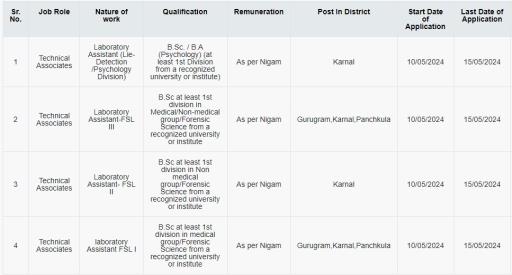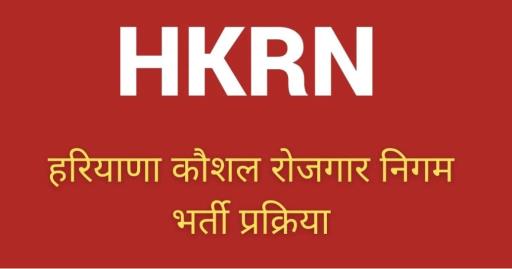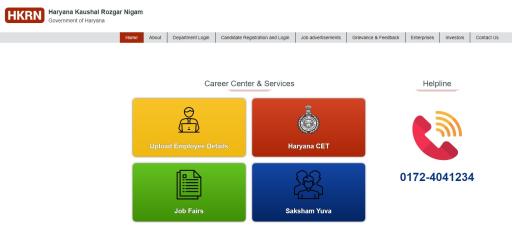HKRN government has taken a significant step towards streamlining and improving contractual recruitment practices with the establishment of the Haryana Kaushal Rozgar Nigam (HKRN). This article delves into the purpose, functionalities, and potential impact of this new organization.

Unveiling HKRN: A New Era for Contractual Recruitment
Incorporated in October 2021, the HKRN is a government body established under the Companies Act, 2013. Its primary objective is to function as the sole authorized agency for deploying contractual manpower across various government departments, boards, corporations, and universities within Haryana. This centralized approach aims to bring transparency, efficiency, and equity to the previously decentralized system of contractual recruitment.
Previously, each government entity in Haryana managed its own contractual manpower recruitment process. This fragmented system was susceptible to inconsistencies, potential delays, and, in some cases, allegations of irregularities. By centralizing recruitment through the HKRN, the government intends to create a standardized and more transparent process.
Core Functions of HKRN: Facilitating Efficient Manpower Deployment
The HKRN’s core functionalities revolve around facilitating the deployment of qualified contractual manpower across various government departments in Haryana. Here’s a breakdown of its key functions:
- Manpower Recruitment & Selection: The HKRN will manage the entire recruitment process, including advertising vacancies, receiving applications, conducting screening and selection procedures, and preparing final merit lists. This standardized process aims to ensure a level playing field for all applicants.
- Focus on Uplifting Disadvantaged Groups: The HKRN’s recruitment process will prioritize uplifting socio-economically disadvantaged candidates by ensuring adherence to the state’s reservation policy. This focus on inclusivity promotes equal opportunity and expands the pool of eligible candidates.
- Timely Payment and Benefits: One of the key concerns for contractual workers is the timely disbursement of salaries and benefits. The HKRN aims to streamline this process and ensure that all contractually deployed personnel receive their remuneration on time. This will contribute to greater job satisfaction and enhance the overall experience for contractual workers.
- Streamlined Grievance Redressal: The HKRN will establish a dedicated grievance redressal mechanism to address any concerns or issues faced by deployed contractual workers. This mechanism will provide a channel for workers to voice their concerns and seek timely resolution.
Benefits of HKRN: A Win-Win for Government and Manpower
The establishment of HKRN presents a multitude of benefits for both the government and the contractual workforce in Haryana. Here’s a closer look at the advantages for both stakeholders:
Benefits for the Government:
- Enhanced Transparency and Efficiency: The centralized recruitment process managed by HKRN fosters transparency and minimizes the risk of irregularities. This standardized system also streamlines administration and reduces paperwork for individual government departments.
- Cost-effectiveness: By consolidating resources and expertise, the HKRN can potentially achieve cost savings for the government compared to the previous decentralized system. This can lead to more efficient utilization of resources.
- Standardized Recruitment Practices: The HKRN ensures consistency in recruitment practices across all government departments. This standardization helps attract a wider pool of qualified candidates and improves the overall quality of the deployed workforce.
Benefits for the Contractual Workforce:
- Fair and transparent recruitment: The centralized system removes potential biases from individual departmental recruitment processes, offering a fairer chance to all qualified candidates.
- Timely Payment and Clear Benefits: The HKRN prioritizes timely payment of salaries and ensures transparent communication regarding benefits, leading to greater job security and satisfaction for contractual workers.
- Grievance Redressal Mechanism: The dedicated grievance redressal system empowers contractual workers to voice their concerns and seek solutions for any workplace issues they encounter.
Potential Challenges and Considerations
While the HKRN presents numerous advantages, it’s important to acknowledge potential challenges and ensure their effective management.
- Effective Implementation: Successful implementation of HKRN’s functions hinges on robust communication strategies and clear guidelines for all stakeholders involved. This includes government departments, recruitment agencies, and potential contractual workers.
- Skilled Workforce Pool: The HKRN’s effectiveness depends on access to a skilled and diverse pool of candidates. Collaboration with training institutions and skill development programs can ensure a steady stream of qualified individuals.
- Technological Integration: Leveraging technology for online applications, database management, and communication can significantly enhance the efficiency and transparency of the HKRN’s operations.
Conclusion: A Promising Step Towards a Streamlined Future
The establishment of the Haryana Kaushal Rozgar Nigam (HKRN) marks a significant step towards a more transparent, efficient, and equitable system for contractual recruitment in Haryana. With a focus on streamlining processes, ensuring fair opportunities, and prioritizing worker well-being, the HKRN has the potential to benefit both the government and the contractual workforce.


